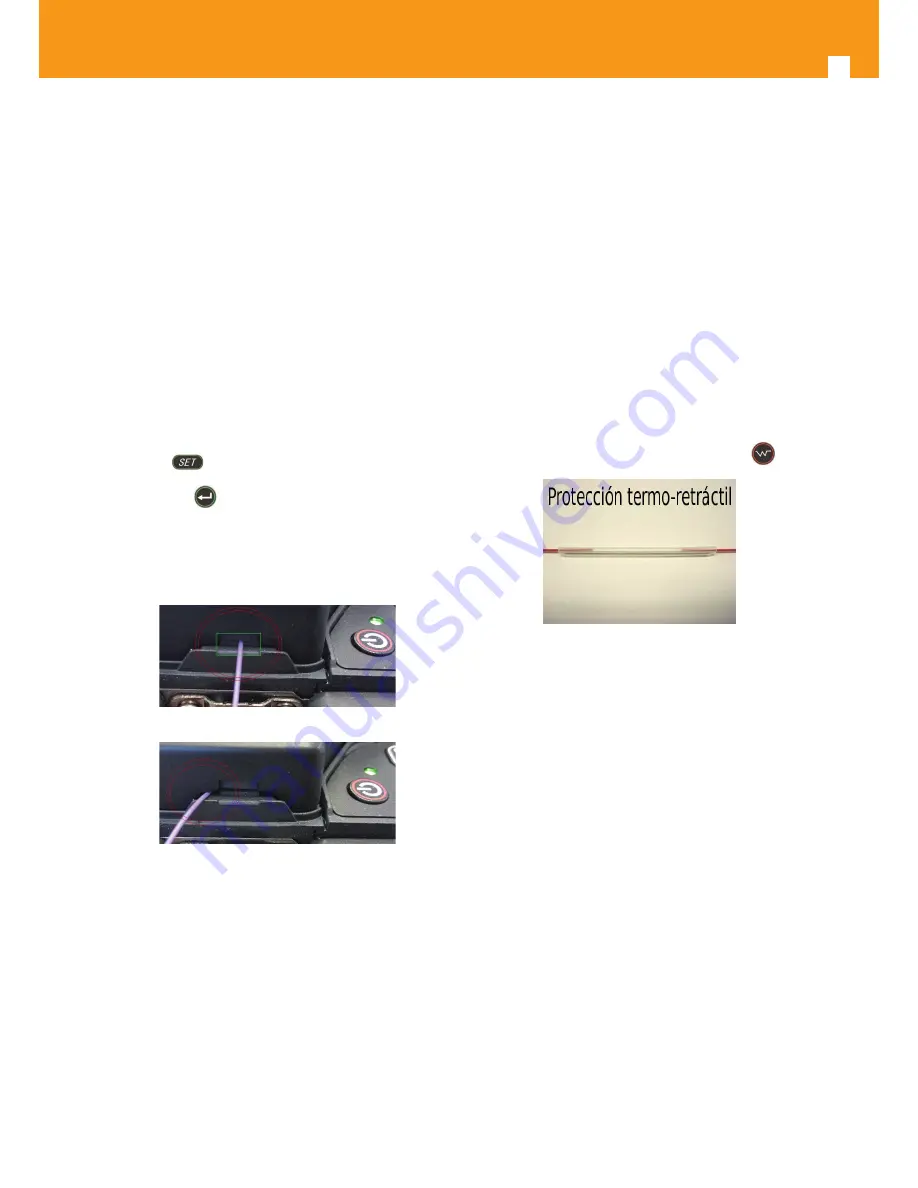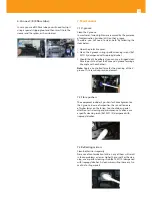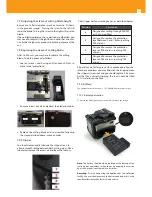
16
5.4 Fibre introduction into the fusion splicer and
splicing process
- Open the protective cover to place the fibre .
- Lift the fibre clamps .
- Put the cleaved fibres on the V-grooves . Insert them from
top to bottom (avoid fibre contact with other elements
present in the fusion splicer) .
- Check that fibres stick out from the V-groove, and that
they sit half-way between the V-grooves and the electro-
des (too close to the electrodes will produce a processing
error) . Before closing the cover, make sure that no fibre is
seen on the screen . This would mean that the fibres are
too close to the electrodes .
- Check that the fibres on the V-groove are not misaligned,
since they may be slightly bent .
- Lower the fibre clamps and the protective cover; the equi-
pment will start the splicing process .
* If the option “automatic start” is disabled, you will have to
push the
key .
Either way, you should have previously entered the “Start”
menu with the
key . The fusion splicer will not work un-
less you are on that menu .
Check the fibres hanging from the fusion splicer are not
blocked by the cover or held by the installation (fibre should
be loose enough to allow the equipment to move it) .
Correct positioning
Incorrect positioning
The splicing process consists on the following steps:
- Fibre positioning .
- Fibre cleaning .
- Adjustment of the distance between fibres .
- Fibre-core alignment .
- Electric arc fusion .
- Loss estimation and tensile test .
Should any error display on the screen, the process will stop
until the anomaly is fixed .
Should the fusion fail to complete:
1) 1) Check the adjustment of the distance between fi-
bres:
Despite the fusion splicer automatically bringing the
fibres together, it has a minimum and a maximum range .
If the fibres are not close enough to each other, the equip-
ment will not be able to bring them together .
2) Check the fibres are not dirty:
Clean both, fibres and
V-groove if necessary .
3) Check the lenses are free of dirt:
Lenses need to be
kept clean, since the equipment uses them to align the fi-
bres . Some of the fusion errors are due to the presence of
dirt on the lenses . In addition, there are two complemen-
tary mirrors on the fusion splicer cover (over the lenses)
that also need to be kept in good condition (clean) . See
section 7 (Maintenance) .
5.5 Heat-shrink protection
Before you proceed with the process preparation, you need
to introduce a heat-shrink protection on one of the fibres to
protect the operation .
After the fusion has taken place, slip the heat-shrink protec-
tion along the fibre until it fully covers the fusion area . The
process final step will be to introduce this heat-shrink pro-
tection into the equipment's "OVEN" and hit the
key .
Keep in mind that while the oven's red LED is on, the oven
is near its maximum operating temperature . When this LED
turns off (a beep will be produced), the temperature will
have reached its maximum value, but the process will still
be on-going . Wait until you hear a second beep (indicating
the oven has reached its minimum temperature), to take
the tube out of the oven and place it on the cooler .
It is likely that the equipment's internal fans turn on while
the oven is being used .
This process manages the temperature of the oven's com-
ponents to enhance durability .























